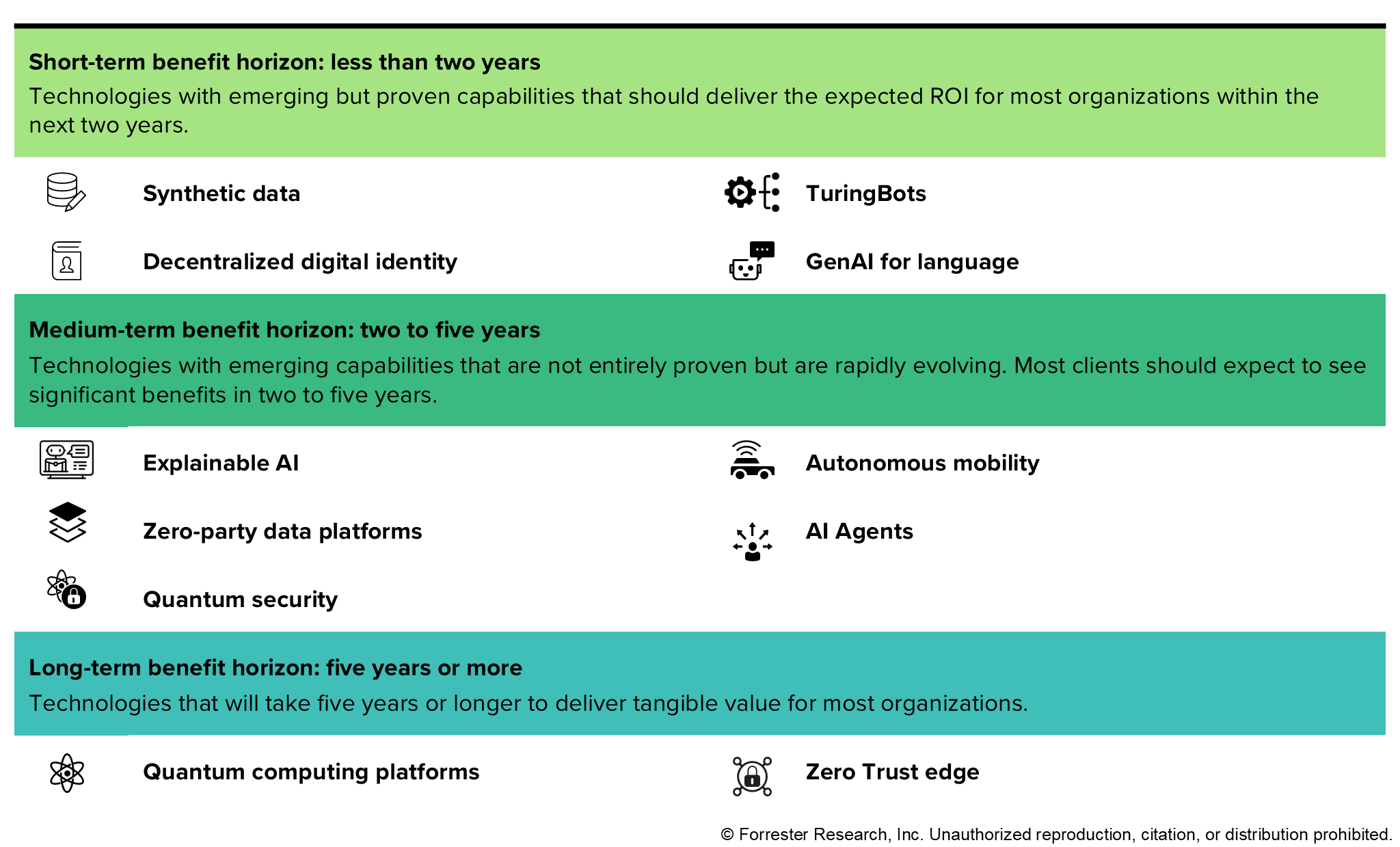Public-Sector IT Leaders: It’s Time To Prioritize The Right Emerging Technologies
Public-sector IT leaders are no strangers to complexity. From legacy systems and siloed data to rising citizen expectations and evolving missions, the challenges are real — and growing. But so are the opportunities.
In our latest research, The Top Emerging Technologies For Public Sector And Government, 2025, we identify 11 technologies that will shape the next decade of government transformation. These aren’t just buzzwords — they’re strategic tools that can help you modernize infrastructure, improve service delivery, and build trust in a digital-first world. But not all technologies are created equal, or equally urgent.
Focus On What Delivers Value When It Matters
Critical to the public sector is the ability to deliver on time, on budget, and on mission. Having the tools on hand to support your service delivery capabilities is critical, but knowing when and where to invest is essential in securing both quick wins and long-term strategic gains. Regulatory constraints, complex systems, conflicting interests, and shifting mission priorities mean that, despite enthusiasm and an appetite for new technologies, the public sector is often more constrained than its private-sector counterparts. As such, the technologies that will reap the most benefits are different than for other industries. We’ve categorized these technologies across three benefit horizons to help you prioritize the following:
- For immediate ROI, invest in ready-to-deploy technologies. With the ability to integrate with existing systems, leverage existing capabilities, and use current datasets, technologies in this category can be implemented immediately to significant effect. Generative AI for language has already been deployed in many agencies internationally, addressing language barriers, providing efficiency gains, and assisting in service delivery for various target groups of key government programs.
- To build capabilities, focus on the next 2–5 years. Technologies are rapidly evolving and can provide extensive benefits over the next few years — when implemented correctly. With the right capabilities and frameworks in place, agencies can look to advance their roadmaps and focus on mission success. Quantum security may still be several years away from mainstream use, but leaders must be prepared to adopt facets of it, such as post-quantum public key algorithms, to improve the security of information exchange and secure increased cryptographic agility in the future.
- Cautiously approach these high-risk, high-reward technologies for the future. Forward-looking agencies will begin to assess whether these advanced technologies have a place in their roadmaps and whether they will be worth the investment. Delivering tangible value in five or more years, technologies such as Zero Trust edge, which has the possibility to reduce costs and enhance protection, can’t be neglected. They are coming — whether you’re prepared or not.

Prepare For The Future: Plan Now
Technology continues to develop faster than any one agency can keep up with, and as leaders, you should prepare and implement as best you can. Such preparation demands bold investment, disciplined planning, and a commitment to adaptability. Leaders should:
- Assess current tech maturity. Not every agency is ready for every innovation — review your current tech stack to identify areas of low maturity or concern. Focus on what aligns with your mission and capabilities, then develop a roadmap.
- Pilot strategically. Use proofs of concept to test emerging technologies in low-risk environments. Identify measurable outcomes to assess the success of these pilots and create a plan for wider implementation.
- Build cross-functional coalitions. Emerging tech success depends on collaboration between IT, policy, and operations. Ensure that you’ve established relationships with key stakeholders across the agency and can clearly communicate the risks and benefits of the technology.
- Invest in talent and governance. New tools require new skills — and new rules. Governance and adherence to policy is critical for public-sector agencies, as trust and reliability are key factors in maintaining stakeholder relations. Ensure that you have comprehensive governance policies to implement these technologies securely, and invest in staff who are capable of long-term governance strategy.
Investigate our wider top emerging technology research, or schedule a guidance session with our experts to discuss how you can plan for and implement these emerging technologies.
(This blog post was written in collaboration with Chiara Bragato, senior research associate, as part of Forrester’s research and continuous guidance for public-sector and government leaders.)
